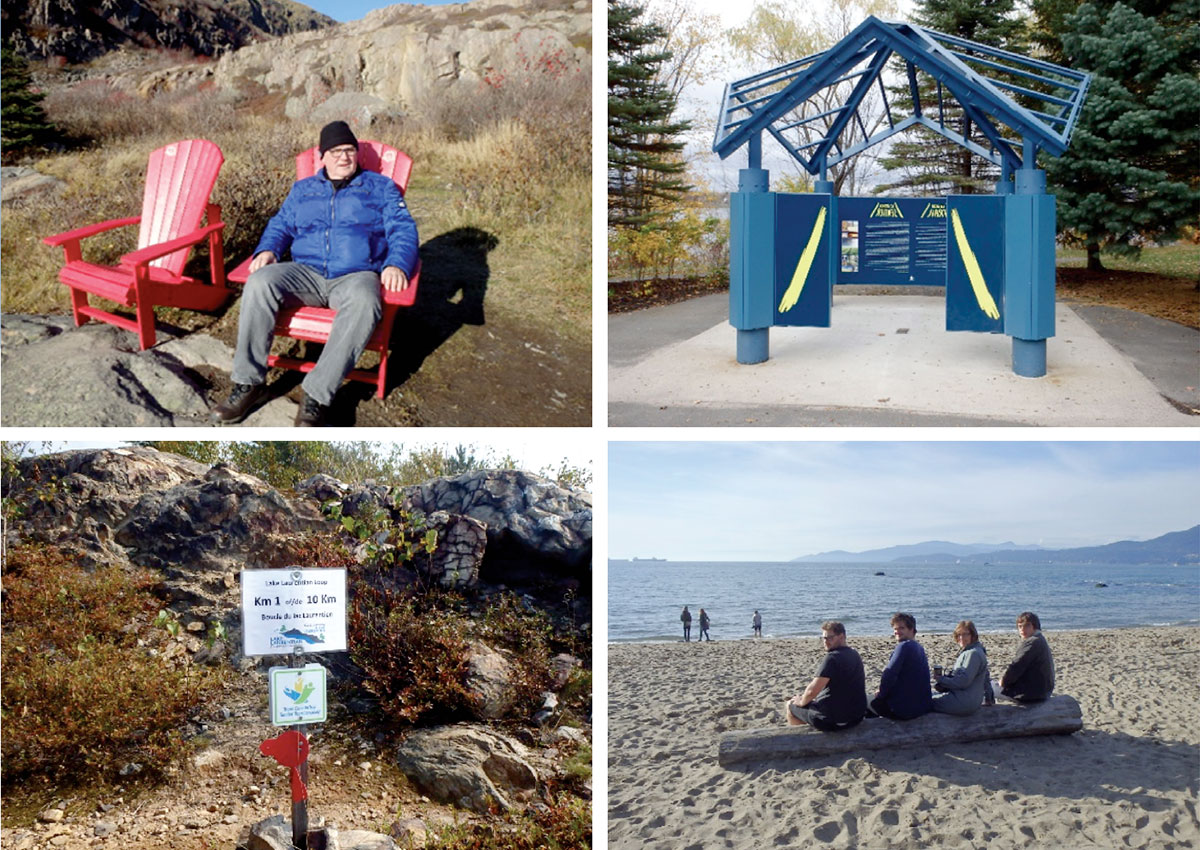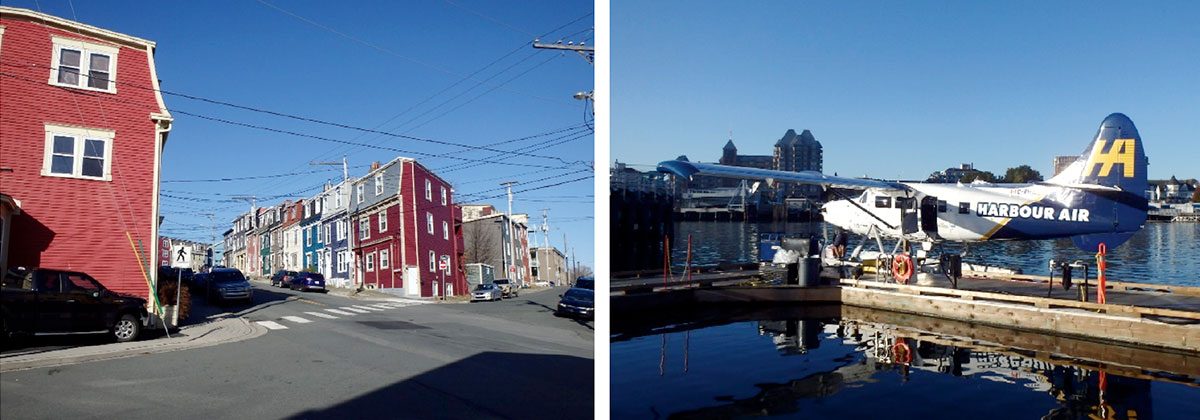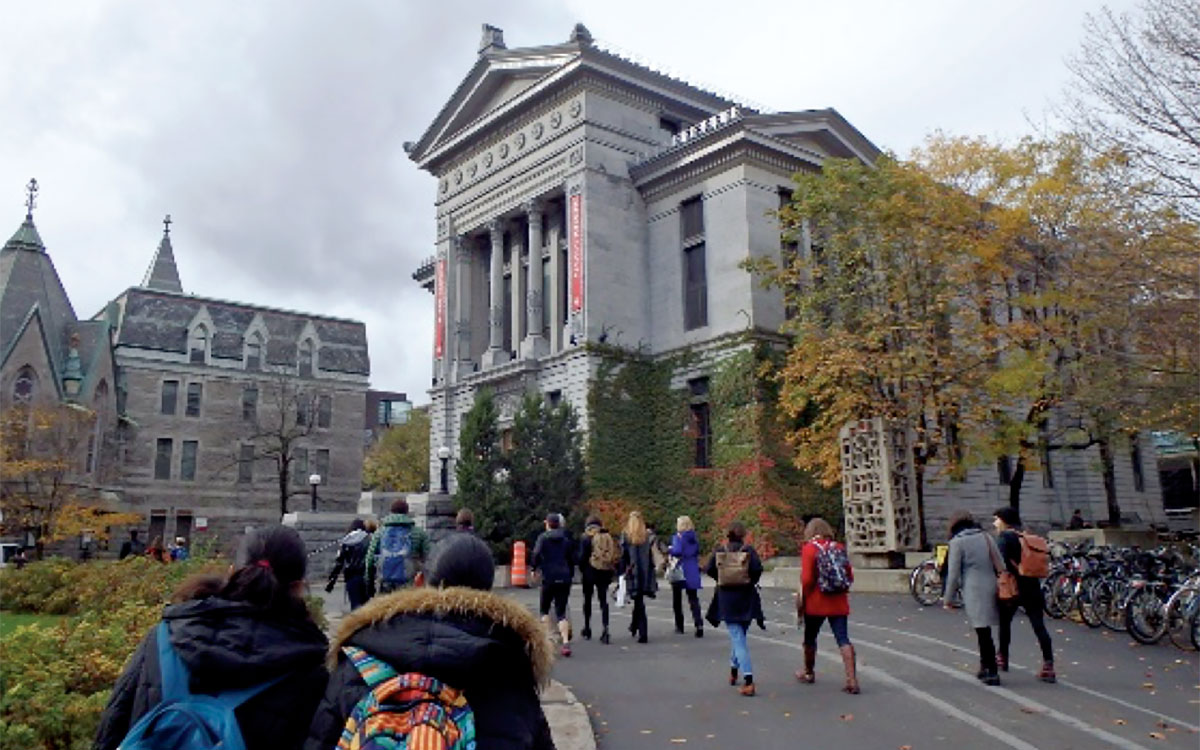After a few years of trying, the CSEG Foundation Distinguished Lecture committee finally caught me for the first time in a long while without any major field project, and I was very happy and honored to serve as the Foundation’s 2017-2018 Distinguished Lecturer. As we all know, times are tight and I was mandated to try to spread the word as inexpensively as possible. Being a field/lab guy who is used to stretching budgets to make things happen this is not too much of a problem. Some of my former graduate students will certainly attest to my ability to find ‘inexpensive’ accommodations in, perhaps, not the most sanitary or safest places. So, I tried to tie my visits to other meetings or business in order to lower the costs as much as possible. But this was part of the fun of the trip. I stayed with some friends along the way and I shied away from hotels in favour of AirBnbs. These all allowed me to better experience all the places I visited in my travels.

I have been very lucky in my career to have been able to work on many different Geophysical projects. Most of this comes from my inability to say ‘No’ to anything but in retrospect this has exposed me to a lot of great science and, just as importantly, fantastic collaborators worldwide. This, together with the fact that on such a tour I would be seeing quite a variety of different audiences pushed me to have a bit of a smörgåsbord of topics from which the local audiences could choose. Three different talks were developed and given. These, in order of their popularity of request are:
1. Geophysical studies of impact structures in which I presented the results of both laboratory measurements and seismic field studies over the three impact craters I have been fortunate enough to work with. The first was VSP’s carried out together with Bernd Milkereit as part of an International Continental Drilling Program study of the Bosumtwi structure in Ghana. The second is within Alberta at the Bow City structure (I can’t officially call it an impact structure as we have not yet found shocked minerals but it is an impact structure) in collaboration with the Alberta Geological Survey and with former graduate student Wei Xie and Todd Bown. The third and most recent went through my group’s experiences in conducting VSP studies in the Integrated Ocean Discovery Program Expedition 364 drilling into the Chicxulub Impact Structure off the Yucatan with graduate student Chris Nixon, research associate Randy Kofman, and our friends at University of Texas at Austin. As this topic sparks people’s imagination, it was by far the most popular (15 requests). Attendees at my presentation at the U of Alberta actually could put their hands-on core samples deformed right at the Cretaceous-Paleocene boundary (previously known as the K-T boundary).
2. Experiences with crustal stress determination from boreholes in which I gave a short tutorial on stress in the earth’s crust, segueing through wellbore stress concentration and finally, to how we exploit all this to quantitatively constrain stress magnitudes and directions. I gave examples of studies to depths of 1500 m in Antarctica from the hydraulic fracturing stress determination team I led and then to discuss current studies of stress associated with induced seismicity in Western Canada. This topic was popular, with 4 requests, in places with more Engineers than Geoscientists. This talk did lead to spirited discussions motivated by current societal, regulatory, and industry concerns; and many good thoughts were voiced.
3. Our studies of rock anisotropy in the field and laboratory was the most technical talk and garnered only 3 requests (two of which were from my fellow Rock Physics geeks in Houston!). This talk started with a brief tutorial of anisotropy and how we can determine it in materials. It stressed some of the wonderful and bizarre behaviour of elastic wave propagation through anisotropic materials and how we are working to overcome problems that arise from these complications. This morphed into overviews of laboratory methodologies developed by my group to more properly obtain values of the anisotropy coefficients in transversely isotropic materials, and ended with an application of results to the perturbed stress states near deviated or horizontal boreholes drilled into the Duvernay Formation using software we have recently developed (soon to be published in Geophysics).

Touring started in early September 2017 with the first leg through Ottawa-Kingston-Sudbury and Toronto. The second leg went to the West Coast with talks at the Geologic Society of Canada (GSC) in Sydney, Victoria, and UBC (attended also by friends from Simon Fraser). The third and busiest leg started in Fredericton and included, for the first time, Rimouski, then Quebec City and Montreal (with friends coming from McGill, UQAM, and U of Montreal). This leg, for reasons I don’t need to go into, ended at my alma mater – the University of Lethbridge where I encountered perhaps my largest crowd (including my parents and aunt). The fourth leg went to the Maritimes again with Memorial, the GSC in Dartmouth, Dalhousie, and Acadia (in Wolfville). I finished up 2017 with two talks at the U of Alberta at the Institute for Geophysical Research and then in the Department of Earth and Atmospheric Sciences. Business took me to Houston in early 2018 where I presented to a packed audience (standing room only!) for the Rock Physics group of the Houston Geophysical Society followed by a webinar broadcast from Schlumberger’s offices. At this point, my life was rather hectic with my move to Purdue; and despite our best attempts it just did not work to visit friends at sites between Edmonton and Toronto – you have my rain checks for this that I hope to make good on at some point. I finished the series on June 20 with a very hectic day of two talks at the CSEG luncheon and at the U of Calgary.

The venues for the talks across the country were, for the most part, classrooms or meeting rooms. However, two were particularly unique and worthy of mention. My talk in Montreal was held in the auditorium of the Redpath Museum on McGill campus. This is actually an old and classic tiered medical theatre with perhaps not the most comfortable seating (so I was warned that the shifting of the audience in their seats during my talk might be due to this). The second was the windowed Milligan Room at Dalhousie University that looked out with its panoramic view over the city and bay.

I saw a lot of the country during the tour, and remember 2017 was also Canada 150 and I saw quite a few of the signs for it around the country. In addition, I walked a few kilometers on the Canada Wide Trail (in St. John’s, Halifax, Fredericton, Sudbury, Edmonton, Calgary, Vancouver, Victoria).
I had too many beers and dinners paid for and invitations to friend’s homes for dinner and for accommodation to allow me to personally thank everyone. Let’s just say that I am very grateful and will never forget these great times together – you know who you are.
Support for the trip came from a number of sources and all of it was very greatly appreciated. The bulk is through the ongoing support of the CSEG Foundation, provided through a generous grant from our Geophysical comrade Dr. Andreas Cordsen (Esso, Norcen & Gedco). This was a great experience for me, and I hope I did a good job promoting Geophysics to students across the country – particularly to institutions such as Lethbridge and Rimouski that are providing strong training that can serve as the basis for launching a career in Geophysics and learning about the earth we live on.












Share This CSEG Report